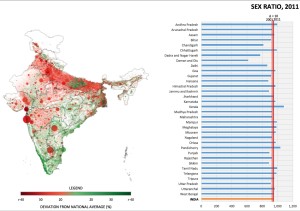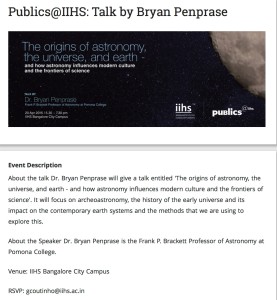During my trip to India, I had a wonderful opportunity to meet with some of the staff at the Indian Institute for Human Settlements, Bangalore to learn more about their innovative approaches to studying the rapid expansion of India’s urban areas. The IIHS runs a Master’s program in Urban Practice (http://iihs.co.in/teaching-and-learning/mup/) , and conducts research that combines demographic data, GIS, and satellite imaging to give a snapshot of India’s urban areas and other settlements, and the future of those cities and villages. This sort of interdisciplinary work is very important for enabling comprehension of the complex interfaces between politics, economic development and the environment – especially as India grapples with the compounding effects of global climate change that will have huge impacts on the Indian water supplies and agriculture. They are hoping to expand to a new campus and offer undergraduate programs as well, using teams of undergraduates to help study the challenges facing India in case studies, field work and original research, as they learn techniques to help India plan for its future decades.


In my meetings I discussed with Neha Sami, some of the ways in which IIHS is able to visualize data with overlays of GIS and demographic research. She presented some very interesting figures that documented some of the movements within India of labor and some of the breakdown within India by gender in literacy, workforce participation and other variables. These visualization come from the IIHS “Urban Informatics Lab” and very powerfully document shifts of millions of Indians from rural to urban areas, and inequities within India that prevent women from achieving full participation in the workforce and in literacy.
In the evening I also had a great chance to give a public talk at IIHS about my book “The Power of Stars – How Celestial Observations have Shaped Civilization.” The talk drew a good crowd of about 25 people from Bangalore and we had a fun discussion about all aspects of astronomy, alignments within both ancient and modern cities, and constellation lore and the large-scale structure of the universe. You can see the entire talk on YouTube at this link: https://www.youtube.com/watch?v=pQ5SyxYnfEI






